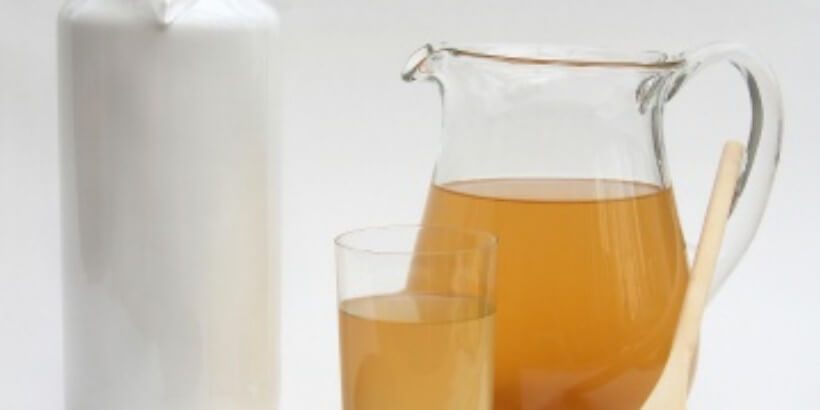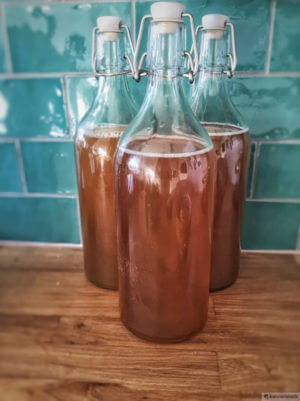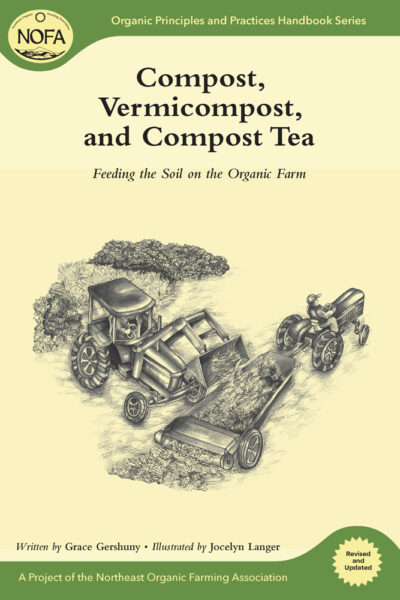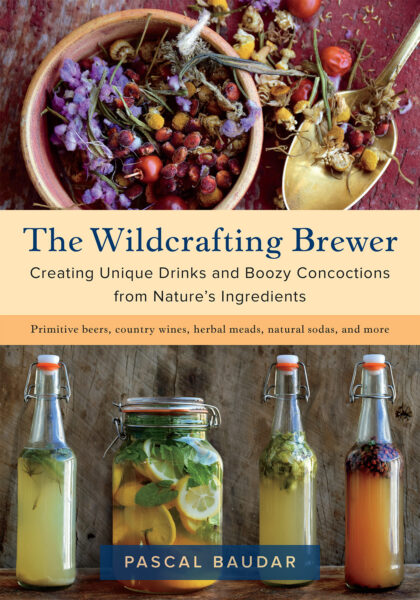Make Your Own Kombucha: The Tea Beast Lives

Kombucha. The tea beast. The new and trendy health drink. The combination black tea and bacteria ball that is known to cure ailments, heal emotional wounds, and impress houseguests who happen upon it by accident when looking for the dog treats. What’s better than drinking this wonderful tea? Making your own.
The following is an excerpt from Wild Fermentation by Sandor Katz. It has been adapted for the web.
Kombucha is a sour tonic beverage, like rejuvelac and kvass, and in Russia, where it has enjoyed long popularity, it is often referred to as “tea kvass.” Kombucha is sweetened black tea, cultured with a “mother,” also known as “the tea beast,” a gelatinous colony of bacteria and yeast. The mother ferments the sweet tea and reproduces itself, like kefir grains.
Kombucha is thought to have originated in China, and has been popular at different times in many different lands. It is beneficial to health, like other live fermented foods, and for a few years in the mid-1990s it was a big American health fad. Any potential cure is appealing to people living with chronic disease. My friend and fellow AIDS survivor Spree got caught up in the kombucha craze. Soon he had more “mother” than he knew what to do with, and started getting everyone to try it. Almost everyone enjoyed the sweet-sour flavor of kombucha. People got really creative with alternative sweet substances for the mother to ferment. I remember our friend Brett Love made kombucha from his favorite soft drink, Mountain Dew. Fermentation processes are very versatile.
The trickiest part of making kombucha is finding a mother. Ask at local health food stores. On the Web, kombucha enthusiasts maintain a Worldwide Kombucha Exchange at www.kombu.de, where mothers are widely available for just shipping costs. Kombucha mothers are also available from G.E.M. Cultures. (See the Cultural Resources section.)
 Timeframe
Timeframe
About 7 to 10 days
Ingredients
For 1 quart/1 liter
1 quart/1 liter water
1⁄4 cup/60 milliliters sugar
1 tablespoon/15 milliliters loose black tea or
2 teabags
1⁄2 cup/125 milliliters mature acidic kombucha
Kombucha mother
Process
- Mix water and sugar and bring to a boil in a small cooking pot.
- Turn off the heat; add tea, cover, and steep about 15 minutes.
- Strain the tea into a glass container. It’s best to use something wide; kombucha needs adequate surface area and works best if the diameter of the container is greater than the depth of the liquid.
- Allow the tea to cool to body temperature.
- Add the mature acidic kombucha. When you obtain a culture, it will be stored in this liquid. Save a portion of subsequent batches for this purpose.
- Place the kombucha mother in the liquid, with the firm, opaque side up.
- Cover with a cloth and store in a warm spot, ideally 70° to 85°F (21° to 29°C).
- After a few days to 1 week, depending on temperature, you will notice a skin forming on the surface of the kombucha. Taste the liquid. It will probably still be sweet. The longer it sits, the more acidic it will become.
- Once it reaches the acidity you like, start a new batch and store your mature kombucha in the refrigerator. You now have two mothers, the original one you started with, and a new one, the skin that formed on your first batch. Use either the new or the old mother in your new batch, and pass the other one on to a friend (or the compost). Each generation will give birth to a new mother, and the old mother will thicken.
Recommended Reads
Recent Articles
Garlic mustard: while known as “invasive,” this plant can be consumed in its entirety and has great nutritional value. Plus, the garlic-flavor is a perfect addition to any recipe that calls for mustard! The following are excerpts from Beyond the War on Invasive Species by Tao Orion and The Wild Wisdom of Weeds by Katrina…
Read MoreOh, honeysuckle…how we love thee. If only there was a way to capture the sweet essence of this plant so we could enjoy it more than just in passing. Luckily, foraging and some preparation can help make that happen! Here’s a springtime recipe that tastes exactly like honeysuckle smells. The following excerpt is from Forage,…
Read MoreIntroducing…your new favorite brunch dish! This whole broccoli frittata is packed with fresh, wildcrafted flavors that are bound to help you start your day off on the right foot. The following is an excerpt from The Forager Chef’s Book of Flora by Alan Bergo. It has been adapted for the web. RECIPE: Whole Broccoli Frittata…
Read MoreWondering where to forage for greens this spring? Look no further than hedges, which serve as natural havens for wild greens and herbs! The following is an excerpt from Hedgelands by Christopher Hart. It has been adapted for the web. Food from Hedges: Salads and Greens Let’s start by looking at all the wild foods…
Read MoreThere’s a whole new world out there when it comes to koji. It doesn’t matter if you’re making bread, cheese, or ice cream, koji helps you pump up the flavor! Growing Koji in Your Own Kitchen Koji, the microbe behind the delicious, umami flavors of soy sauce, miso, fermented bean sauce, and so many of…
Read More









